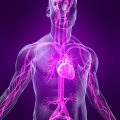Table of Contents
Postural Tachycardia Syndrome, or better known as POTS medical condition is a type of dysautonomia, which is an umbrella term scientists use to describe different medical conditions that leads to Autonomic Nervous System (ANS). ANS is characterized by rapid increase of heart rate, usually above 120 bpm or an increase of 30 bpm from normal when getting to upright position from reclined or sitting position, and without significant changes in blood pressure. Other symptoms include anxiety, lightheadedness, fatigue, sweating, syncope, tremors, and more.
This increase of heart rate called orthostatic intolerance (OI), and prevalent among people suffering from POTS. Also, the excessive heart rate can be a sign for problems in cardiovascular system; forcing the system to work harder than it’s supposed to to maintain blood pressure for blood flow to the brain.
Common Signs and Symptoms
Aside from excessive heart rate, lightheadedness, palpitations and tremulousness when standing, POTS also comes with many different symptoms, which could depend from underlying medical conditions. Some of the most common symptoms are:
- Throbbing of the head
- Head and neck discomfort
- Visual changes
- Nausea
- Chest discomfort
- Weakness
- Tiredness
- Poor concentration
- Shortness of breath
POTS and Hypovolemia
Hypovolemia refers to abnormal drop of blood volume, or to be specific, an abnormal drop of plasma in the blood. This is common among POTS patients, and it may have caused by the blood pooling on legs and abdomen during upright position.
Long-Term Outlook for People Living with POTS
Most POTS patients have experience mild symptoms, which gradually improves over months, or even weeks. Most of the time, the body will learn to recover, freeing the patient from symptoms. But in some cases, symptoms develop and become more severe. These symptoms also often lead to various illnesses, and their duration may be longer, without any signs of recovery. Thus, it is crucial to check with your to manage its symptoms or even to treat POTS with the right methods and medications.
Who Gets POTS?
Though most frequently seen among women, usually less than 35 years of age, POTS can affect anyone. Also, OI actually affects around 500,000 Americans, comes with different symptoms and causes wide range of disabilities.
Causes of POTS
Up until today, medical researchers have yet to pinpoint the exact cause of POTS. There are however, lots of proven reasons why anyone can develop this syndrome, and most of the time, they arise from underlying medical condition or viral infection. Also, because of the changes of severity and occurrences of its symptoms, many POTS patients remain undiagnosed.
Another problem that contributes to diagnosis of orthostatic intolerance is the overlap of other conditions, such as CFS (Chronic Fatigue Syndrome), NMS (Neurally Meditated Syncope), and physical deconditioning. Also, those who experience hypovolemia due to blood pooling in legs and abdomen can be categorized as POTS patients as well.
Diagnosing POTS
Aside from asking more details about a patient’s health, doctors will conduct thorough physical exam called head upright tilt table, where blood pressure and heart rate is measured, while the patient is sitting and lying down, immediately after standing for 2, 5 and 10 minutes.






 I love to write medical education books. My books are written for everyone in an easy to read and understandable style.
I love to write medical education books. My books are written for everyone in an easy to read and understandable style.